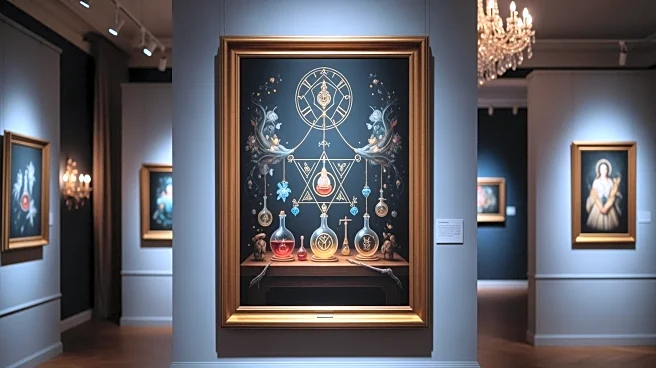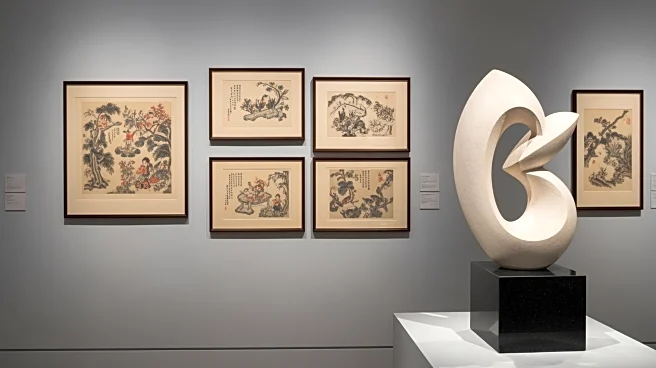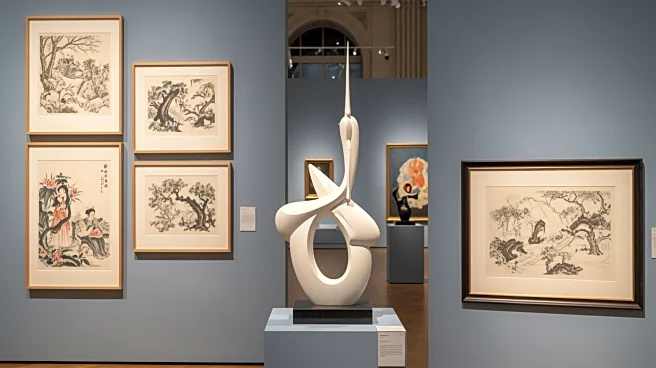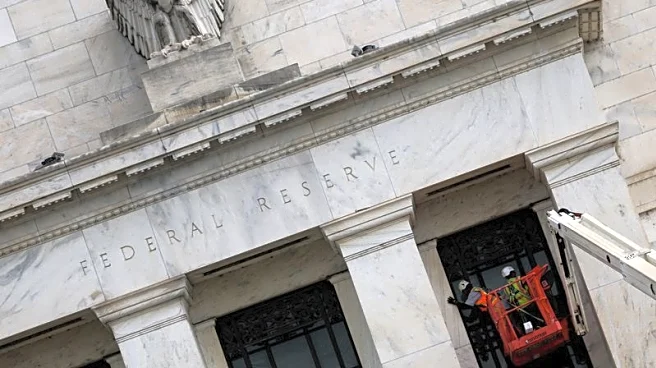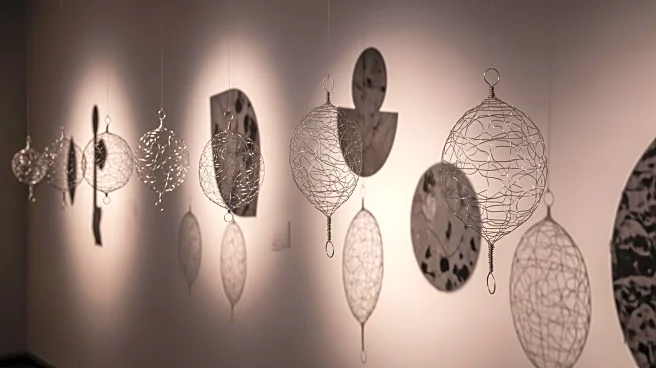What's Happening?
Christopher Bishop, a New York-based art dealer, has unveiled a rare Baroque painting titled 'The Triumph of Night' by Neapolitan artist Fedele Fischetti. Discovered at a London auction house, the painting was
initially unattributed, but Bishop identified it as a work by Fischetti, known for his theatrical style and vibrant colors. The painting is part of an exhibition titled 'Alchemy and the Painter' at Bishop's Upper East Side gallery, running through December 12. The artwork features complex symbolism related to alchemy, a theme Bishop explored extensively to decode its meaning. The painting is believed to have been commissioned by Raimondo di Sangro, an 18th-century alchemist and Freemason.
Why It's Important?
The discovery and exhibition of 'The Triumph of Night' highlight the intersection of art and alchemy during the Baroque period, offering insights into historical artistic practices and beliefs. Bishop's work underscores the importance of art dealers in uncovering and preserving cultural heritage. The exhibition provides a unique opportunity for art enthusiasts and historians to explore the mystical elements of Baroque art, which are often overlooked. This event also reflects the growing interest in the occult and mystical themes in contemporary art, bridging past and present artistic expressions.
What's Next?
The exhibition 'Alchemy and the Painter' will continue at Christopher Bishop Fine Art until December 12, allowing visitors to explore the painting and accompanying artifacts. Bishop has published a catalog detailing the painting's symbolism and historical context, which may attract further scholarly attention and public interest. The unveiling of this artwork could inspire other art dealers and historians to re-evaluate misattributed or overlooked works, potentially leading to more discoveries in the art world.
Beyond the Headlines
The exhibition raises questions about the role of alchemy in art and its influence on cultural and scientific developments during the Enlightenment. It challenges the notion that Enlightenment ideals were purely rationalistic, highlighting the era's complex relationship with mysticism. The painting serves as a reminder of the historical significance of Freemasonry and its impact on art and society.
